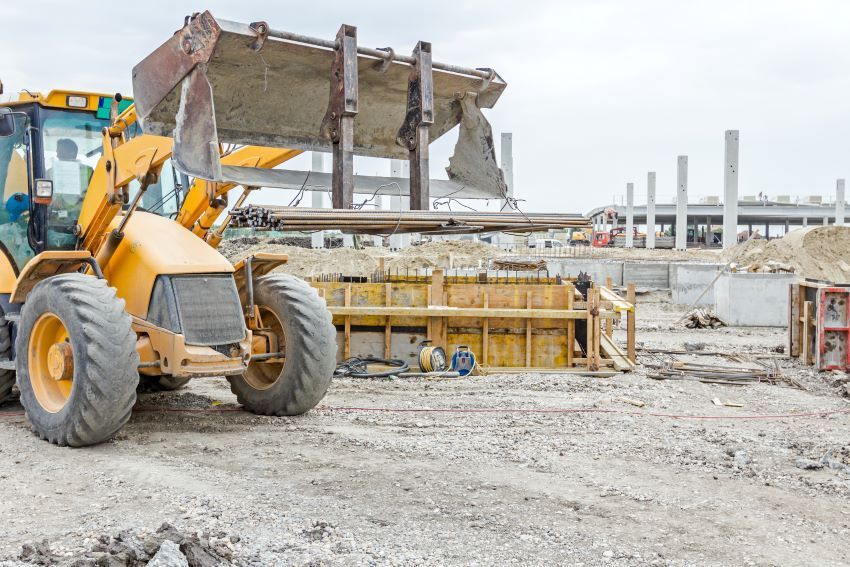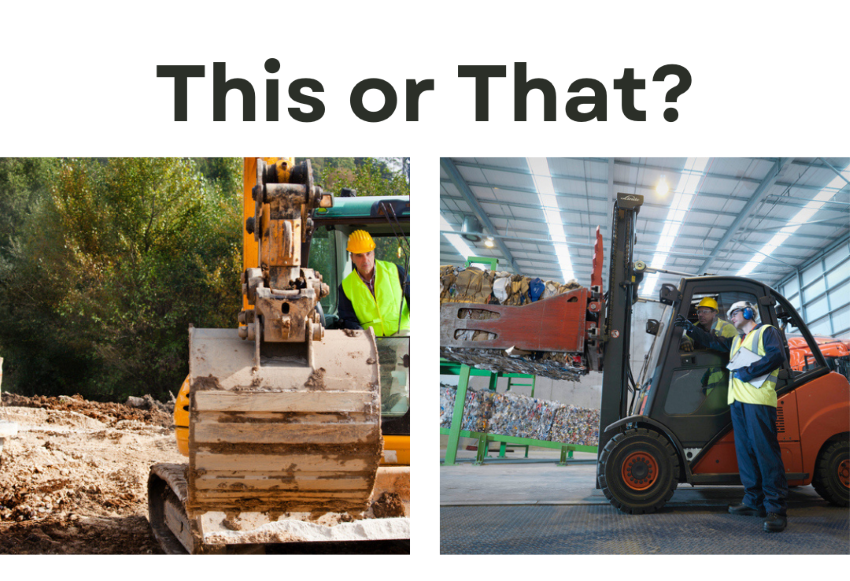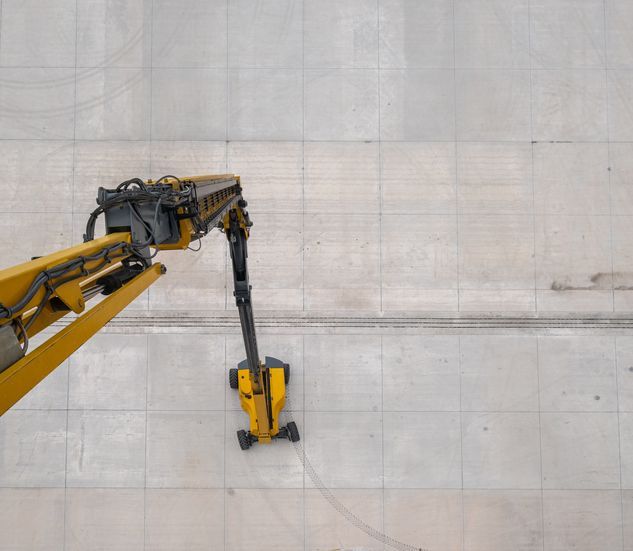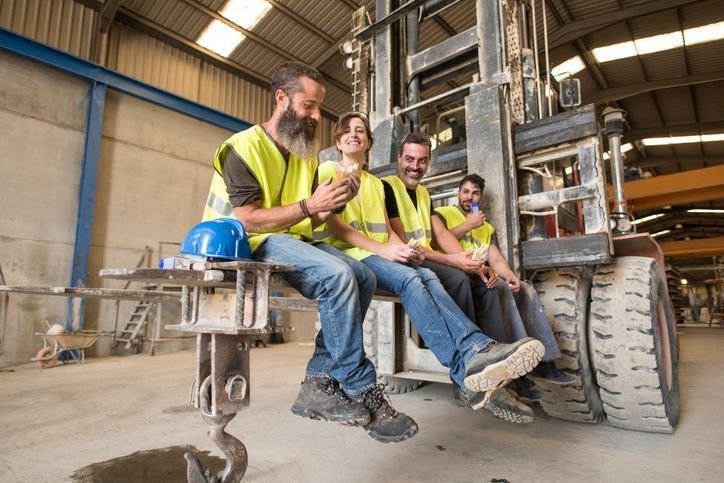(click for direction)
Emergency Number: 0409 900 902
Top Features to Look for in a Construction Forklift
Did you know that construction forklifts, also known as rough terrain forklifts, account for over 30% of material handling equipment used on Australian construction sites? These powerful machines play a crucial role in moving heavy materials, ensuring projects run smoothly and efficiently.
Construction site forklifts are essential for lifting and transporting materials across uneven and challenging terrains commonly found on job sites. Whether you are a construction company owner, site manager, or procurement officer, selecting the right forklift can significantly impact your project's success.

1. Types of Construction Forklifts
Choosing the right type of construction forklift is essential for the efficiency and safety of your project. There are two main categories to consider: Rough Terrain Forklifts and Compact Forklifts. Additionally, understanding the different fuel types—Electric, Diesel, and LPG Forklifts—can help you make an informed decision based on your site's specific needs.
Rough Terrain vs. Compact Forklifts
Rough Terrain Forklifts are built to handle outdoor construction sites with uneven and challenging surfaces. They feature large pneumatic tyres that provide excellent traction and stability on dirt, gravel, and other rough terrains. These forklifts are ideal for heavy-duty tasks such as moving large construction materials, equipment, and supplies across the site. Their robust design ensures durability and reliability in harsh conditions.
On the other hand, Compact Forklifts are smaller and more maneuverable, making them suitable for tight spaces and indoor use. They are perfect for tasks that require precision and agility, such as stacking materials in confined areas or navigating narrow pathways. Compact forklifts are lighter and easier to transport, which is beneficial for projects with limited space or requiring frequent movement between different areas.

Electric, Diesel, and LPG Forklifts
When selecting a construction forklift, the fuel type plays a significant role in determining its efficiency and environmental impact. Here's a comparison of the three main fuel types.
Electric Forklifts are powered by batteries, making them an eco-friendly option. They produce zero emissions, which is great for indoor environments and sites with strict environmental regulations. Electric forklifts are also quieter, reducing noise pollution on the construction site. They require less maintenance compared to their fuel-powered counterparts, as they have fewer moving parts. However, their operational time is limited by battery life, and recharging can take several hours.
Diesel Forklifts are known for their power and durability, making them suitable for heavy-duty outdoor tasks. They offer high load capacities and are effective in handling large materials over long distances. Diesel forklifts are more fuel-efficient for extended use and can operate continuously without the need for frequent refuelling. However, they emit pollutants, which can be a concern for indoor use and environmentally sensitive areas. Additionally, diesel forklifts tend to require more maintenance due to their complex engines.
LPG (Propane) Forklifts provide a middle ground between electric and diesel forklifts. They offer the power and durability needed for outdoor construction tasks while producing fewer emissions than diesel forklifts. LPG forklifts are versatile and can be used both indoors and outdoors, making them a flexible choice for various construction sites. They also have faster refuelling times compared to electric forklifts, allowing for longer operational periods. However, LPG forklifts still require regular maintenance and proper fuel storage to ensure safety and efficiency.
2. Load Capacity and Lift Height
Selecting a construction forklift with the right load capacity and lift height is crucial for the efficiency and safety of your project. These two factors determine how well the forklift can handle your specific tasks and contribute to overall project success.

Load Capacity
Load Capacity refers to the maximum weight a forklift can safely lift and transport. Choosing a forklift with an appropriate load capacity is essential to prevent accidents and ensure smooth operations on your construction site.
- Heavy-Duty Forklifts. For projects that involve moving large and heavy materials, heavy-duty forklifts are ideal. These forklifts can handle loads exceeding 10 tons, making them suitable for major construction tasks such as lifting steel beams, concrete blocks, and large equipment.
- Matching Capacity to Needs. It is important to assess the heaviest loads you will be handling. Selecting a forklift with a higher load capacity than your maximum requirement provides a safety margin and enhances durability.
- Safety Considerations. Operating a forklift beyond its load capacity can lead to equipment failure and increase the risk of accidents. Always adhere to the manufacturer's guidelines to maintain a safe work environment.
Maximising Lift Height
Lift Height is the maximum vertical distance a forklift can raise a load. Proper lift height is vital for stacking materials efficiently and accessing high storage areas without compromising safety.
- Mast Types. The mast is the vertical assembly that raises and lowers the forks. Different mast types offer varying lift heights and capabilities:
- Standard Mast. Provides a moderate lift height, suitable for most construction tasks.
- Triple Mast. Allows for higher lift heights, ideal for projects that require stacking materials at greater heights.
- Four-Stage Mast. Offers the highest lift heights, perfect for large-scale construction projects with extensive vertical storage needs.
- Impact on Efficiency. A forklift with adequate lift height can reduce the time spent moving materials, as it allows for quick stacking and retrieval. This efficiency can lead to faster project completion and lower labour costs.
- Safety. Proper lift height ensures that loads are stable and secure during transportation. Overextending the lift height can make the forklift unstable, increasing the risk of tipping. Always choose a lift height that aligns with your site's requirements and maintains balance.
3. Safety Features
Ensuring the safety of operators and workers on a construction site is paramount. Modern construction forklifts come equipped with various safety features that help prevent accidents and promote a secure working environment. Here are the key safety features to consider when selecting a forklift.

ROPS and Operator Protection
ROPS (Rollover Protective Structures) are essential for protecting forklift operators in the event of a rollover. These sturdy frameworks surround the operator's cab, providing a barrier against falling objects and impacts. Additionally, seat belts are a critical component of operator protection. They keep the operator securely in place, reducing the risk of injury during sudden movements or accidents.
- ROPS. Protects the operator from rollovers and impacts.
- Seat Belts. Secures the operator, enhancing safety during operation.
Stability Controls
Stability controls are systems designed to maintain the forklift's balance during operation. These controls monitor factors such as load weight and distribution, automatically adjusting the forklift's stability to prevent tipping. By maintaining balance, stability controls ensure that the forklift operates safely, even when handling heavy or uneven loads.
Safety Alarms and Load Backrests
Safety alarms are audible and visual signals that alert operators and nearby workers to potential hazards. These alarms can indicate when the forklift is in motion, when a load is being lifted, or when the forklift is approaching a restricted area. By providing clear warnings, safety alarms help prevent accidents and ensure that everyone on the site remains aware of forklift movements.
Load backrests are protective barriers attached to the forklift's forks. They prevent loads from falling backward, especially when the forklift is moving or turning. Load backrests enhance load stability, reducing the risk of materials shifting and causing accidents. This feature is particularly important when handling long or unstable loads, ensuring that materials remain secure during transportation.
4. Operational Specifications
When choosing a construction forklift, understanding its operational specifications is vital for ensuring it meets your project's needs. Two key aspects to consider are turning radius and maneuverability, as well as fuel efficiency and battery life. These factors influence how well the forklift performs in various environments and impact your overall operational costs.
Turning Radius and Maneuverability
The turning radius of a forklift determines how tightly it can turn. This is especially important on construction sites with limited space or narrow pathways.
- Turning Radius. A smaller turning radius allows the forklift to navigate tight corners and confined areas more easily. This is crucial in busy sites where space is at a premium, and the forklift needs to move swiftly between different work zones.
- Maneuverability. High maneuverability ensures that the forklift can move smoothly and efficiently around obstacles. Forklifts with excellent maneuverability reduce the risk of collisions and make it easier to position loads accurately.
Choosing a forklift with an appropriate turning radius and good maneuverability enhances operational efficiency. It allows for quicker movement around the site, reduces downtime, and minimises the risk of accidents in crowded or restricted areas.
Fuel Efficiency and Battery Life
Fuel efficiency and battery life are important factors that affect a construction forklift's cost and performance.
- Fuel Efficiency. Forklifts that consume less fuel help lower your operating costs. Efficient fuel usage means longer working hours between refuels, which increases productivity and reduces the frequency of fuel stops.
- Battery Life. For electric forklifts, a long-lasting battery is essential. Extended battery life allows for longer operation periods without the need for frequent recharging. This is particularly beneficial for projects that run for multiple shifts or require continuous material handling.
Improving fuel efficiency and maximising battery life can lead to significant cost savings. Efficient forklifts reduce fuel and energy expenses, while longer battery life ensures that your operations run smoothly without unnecessary interruptions for refuelling or recharging.
5. Technological Advancements
Forklifts are becoming smarter and more connected. New technologies help improve efficiency, safety, and maintenance. Here are the key technological advancements to consider when choosing a construction forklift.
Telematics and Fleet Management
Telematics systems use GPS tracking and data analytics to manage forklift fleets effectively. With GPS, you can monitor the location of each forklift in real-time. This helps you know where your equipment is at all times, reducing the time spent searching for forklifts.
Data analytics provide insights into how your forklifts are being used. You can track usage patterns, identify idle times, and optimise routes. Fleet Management systems help you schedule maintenance, ensuring your forklifts are always in good condition. This reduces downtime and extends the lifespan of your equipment.
Implementing telematics and fleet management tools can lead to better resource allocation and increased productivity on your construction site.
Smart Forklifts and Automation
Smart Forklifts come with advanced features like sensors and automation. These forklifts can detect obstacles, prevent collisions, and assist operators in handling loads more efficiently. Automation in forklifts can include automated guidance systems, which help forklifts move along predefined paths without human intervention.
IoT Integration connects forklifts to the Internet of Things, allowing them to communicate with other equipment and systems on the site. This integration enables real-time data sharing and coordination, improving overall workflow.
Smart forklifts and automation enhance productivity by reducing human error and speeding up material handling processes. They also improve safety by minimising the risk of accidents.
Battery
Advances in battery technology have significantly improved electric forklifts. Modern batteries have longer lifespans and charge faster, reducing downtime between operations. Improved battery efficiency means electric forklifts can run for longer periods without needing to recharge, making them more reliable for large construction projects.
Fast-charging batteries allow for quick turnaround times, ensuring that forklifts are ready to work again sooner. Additionally, new battery designs are more durable and require less maintenance, lowering overall operational costs.
Battery technology innovations make electric forklifts a more viable and cost-effective option for construction sites looking to reduce emissions and operate more sustainably.
Need HEAVY EQUIPMENT MElboUrne and VIC?
Forklift rental is cost-effective, and you can consider hiring to meet any seasonal peaks.
Quick Links
Contact info
Address:
826 Mountain Hwy, Bayswater VIC
Emergency Number:
0409 900 902
Phone:
(03) 9762 4965
Follow Us On:
Business Hours
- Mon - Thu
- -
- Friday
- -
- Sat - Sun
- Appointment Only
24-hour emergency
Public holidays: Closed
ABN: 55179159792
Payment Options




